Most of us think of exercise as a neck-down activity: Our muscles, bones, and connective tissue get some much-needed attention, while our brains get a break.
But the brain is a movement machine, says Jeremy Schmoe, DC, founder of the Center for Functional Neurology in Minnetonka, Minn. Schmoe and others like him use noninvasive exercises and therapies to rewire the neurons of patients who have suffered brain injuries and other neurological disorders.
More often than not, these routines involve complex movement, including balance drills, hand–eye exercises, and reaction-time tests. As the patients master the moves, their brains get better — and symptoms lift.
“Complex movement activates the cerebellum,” he explains, referring to the croissant-shaped slice of gray matter nestled at the base of your skull. “When you move the body in many planes, your brain receives feedback from your joints, muscles, eyes — all of which it uses to help you maintain balance and generate power.
But brain-stimulating workouts — also known as neurobics — aren’t just for people coping with neurological challenges. For the everyday exerciser, they can help refine balance, coordination, and physical control — and in so doing, leave the brain sharper.
For a quick gray-matter tune-up, try these four moves.
Directions
Perform the following moves several times a week, as part of a physical warm-up before a workout, between exercises at the gym, or any time you want to feel more alert and focused.
As with any form of exercise, the key to improvement is to keep these moves progressive: “The brain loves novelty,” says Schmoe. “When a move becomes easy, find a way to complicate it.” Balance on one foot. Speak aloud the names of every other month, prime numbers, or multiples of seven, for example.
Opposite-Hand High Kicks
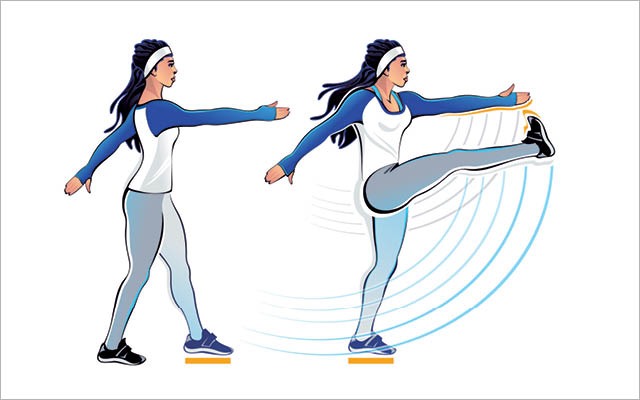
- Assume a staggered stance with your left foot forward and right arm extended in front of you.
- Balancing on your left foot, simultaneously swing your right foot and your left hand forward, attempting to kick the palm of your left hand with your right foot; keep your gaze forward.
- Return to the starting position and repeat for 20 reps.
- Repeat the move on the opposite side, kicking your left foot to your right hand.
Make It Easier: Bend your knee as you raise it.
Make It Harder: Perform the movement continuously, without setting your kicking leg on the floor behind you between repetitions.
Upper-Lower Figure Eights
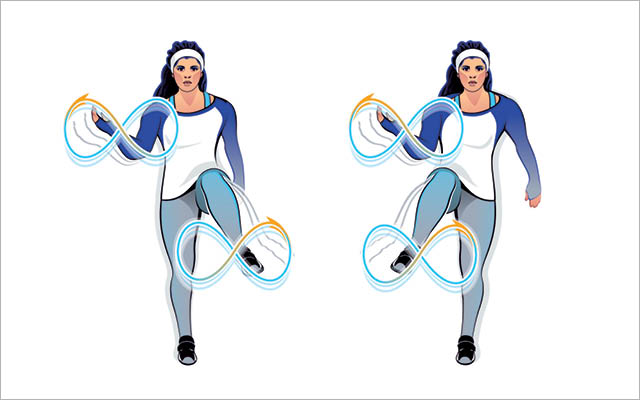
- Balance on your right foot and lift your left knee into the air until your left thigh is parallel to the floor.
- Extend your right arm in front of you.
- Simultaneously draw sideways figure eights in the air with your left foot and right hand.
- Perform 20 reps, then repeat the move using your right foot and left hand.
Make It Easier: Try the move using just your hands: First trace two parallel figure eights. Then trace mirror-image figure eights (your movements will resemble a conductor holding two batons). Finally, trace figure eights in space in opposite directions: As one hand moves up and outward, the other moves down and outward, and vice versa.
Make It Harder: Perform the move as directed (opposite hand and foot in motion), then try doing figure eights with the same-side foot and hand: right hand and right foot, then left hand and left foot.
Eye-Tracking Walks
![]()
- Place a small mark or piece of tape on a wall and stand about 10 feet away.
- Keeping your eyes on the mark, slowly walk toward the wall, rotating your head smoothly left and right.
- Perform the same move walking backward.
- Repeat, this time tilting your head forward and back as you walk.
Make It Harder: Circle your head — up, right, down, left or up, left, down, right — as you walk. Or move your head in a random pattern — up, left, up, down, right, and so on — repeatedly as you walk.
Contralateral Forward–Backward March
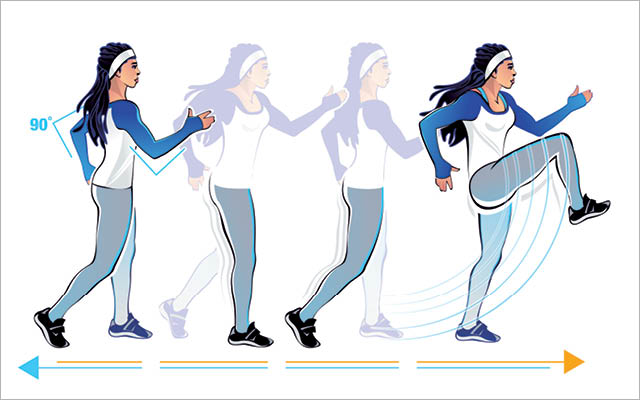
- Stand tall with left foot forward and on the ball of your right foot on the floor behind you. Position your right arm slightly forward, your left arm slightly back, and both elbows bent 90 degrees.
- Take two powerful steps forward, switching your arms with each step.
- Begin to take a third step, reversing your arms again, and this time drive your right knee upward as high as possible. Pause for a moment, then perform the entire sequence walking backward, one step at a time, until you are back in the starting position.
- Repeat for 10 to 20 reps, then repeat the entire sequence starting with your right foot forward.
This originally appeared as “Mind Games” in the October 2020 print issue of Experience Life.

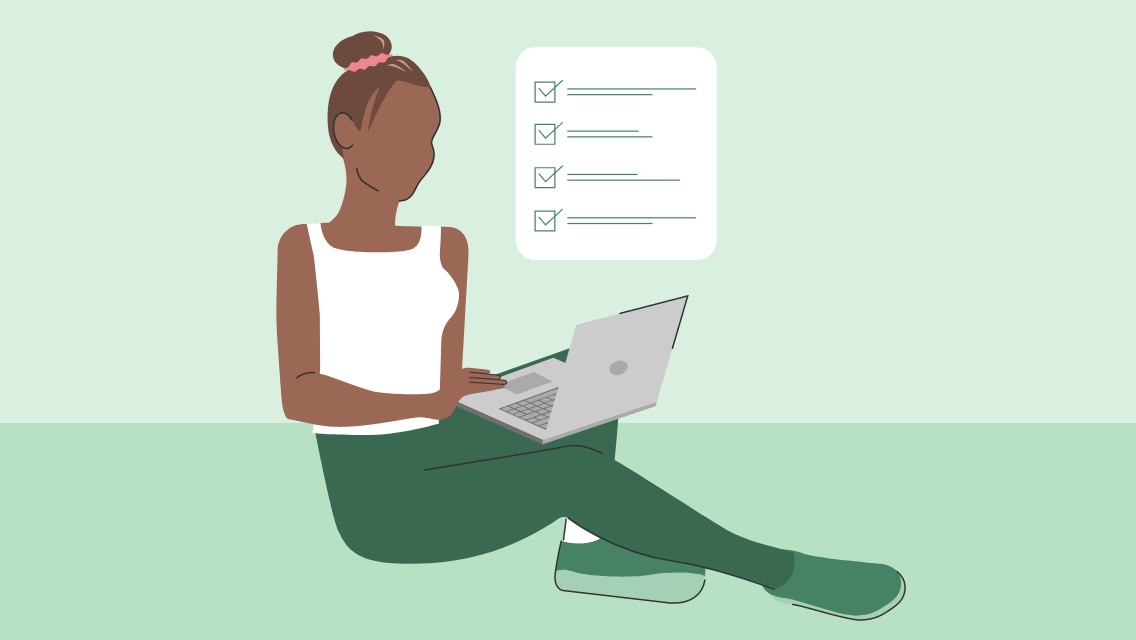

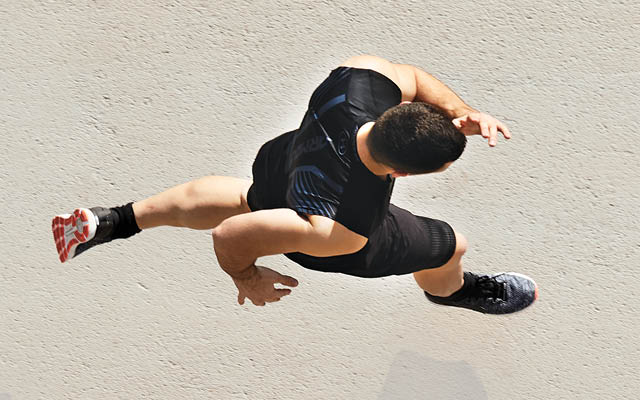
This Post Has One Comment
Outstanding info and exercise directions. Neurobic exercises will be difficult at the outset for seniors, but it gets much easier over time, I am guessing. I turn 80 in a couple of weeks. My goal is to not run out of function before I run out of years. Enhancing proprioception is so important in preventing falls!